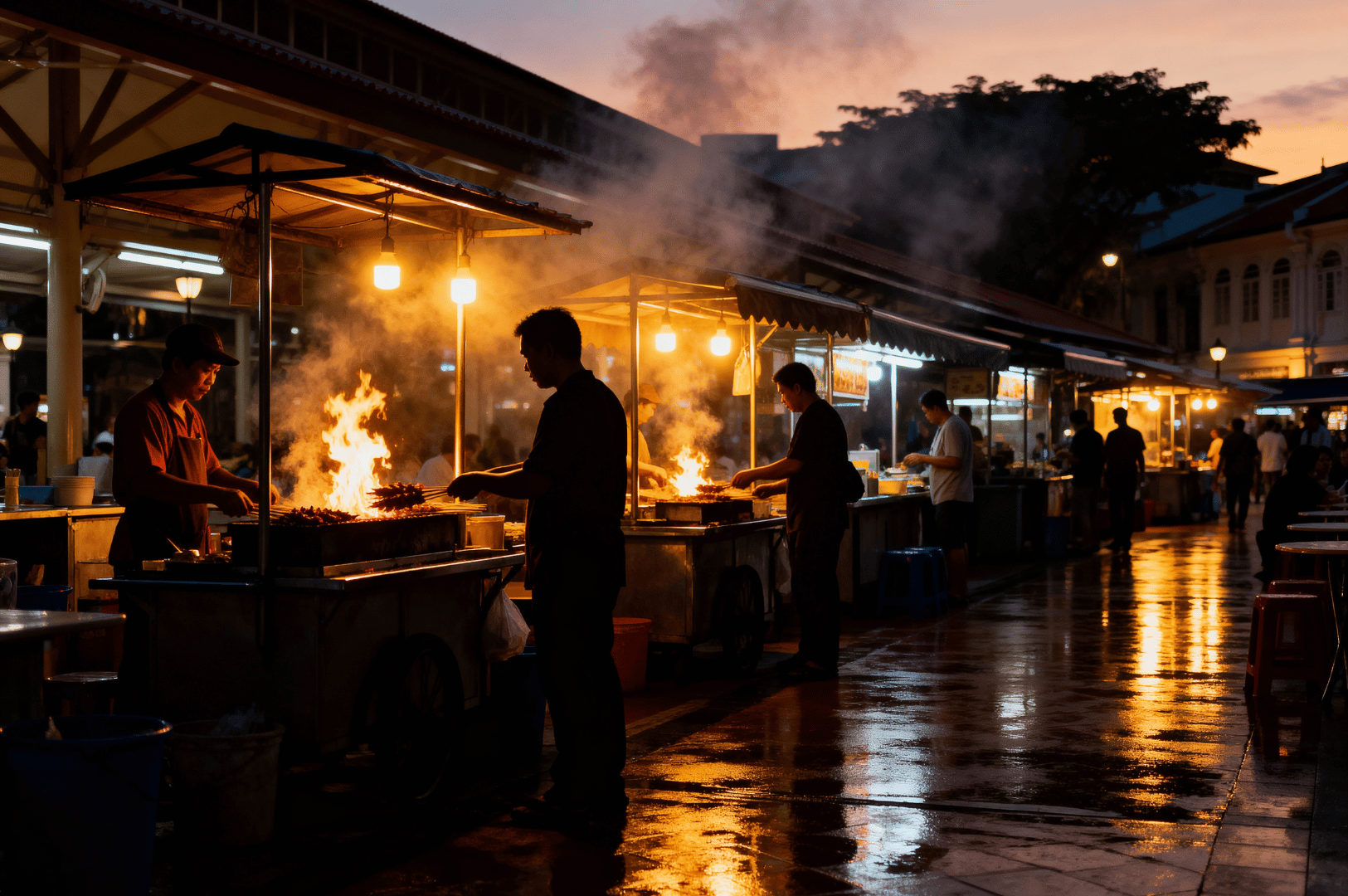The first time I encountered Singapore’s satay masters at work, I was mesmerized by the dance of flame and smoke. Standing at the edge of Lau Pa Sat’s famed Satay Street as dusk settled, I watched weathered hands expertly flip skewers over licking flames, the aromatic smoke creating halos in the evening light. These weren’t just cooks; they were performers, artisans, and guardians of culinary heritage.
My initial photographs from that evening were technically adequate but soulless – they captured the scene but missed the story. This realization sparked my six-month journey to document these culinary artisans properly. I wanted to showcase not just their food but their craft, wisdom, and the fading tradition they embodied.
Food photography in Singapore’s hawker centers presents unique challenges: dim lighting punctuated by harsh flames, constant movement, oppressive heat, and the delicate dance of respecting cultural boundaries while seeking authentic moments. This wasn’t about staged food photography; it was documentary work requiring patience, cultural sensitivity, and technical adaptation.
The Approach: Building Relationships
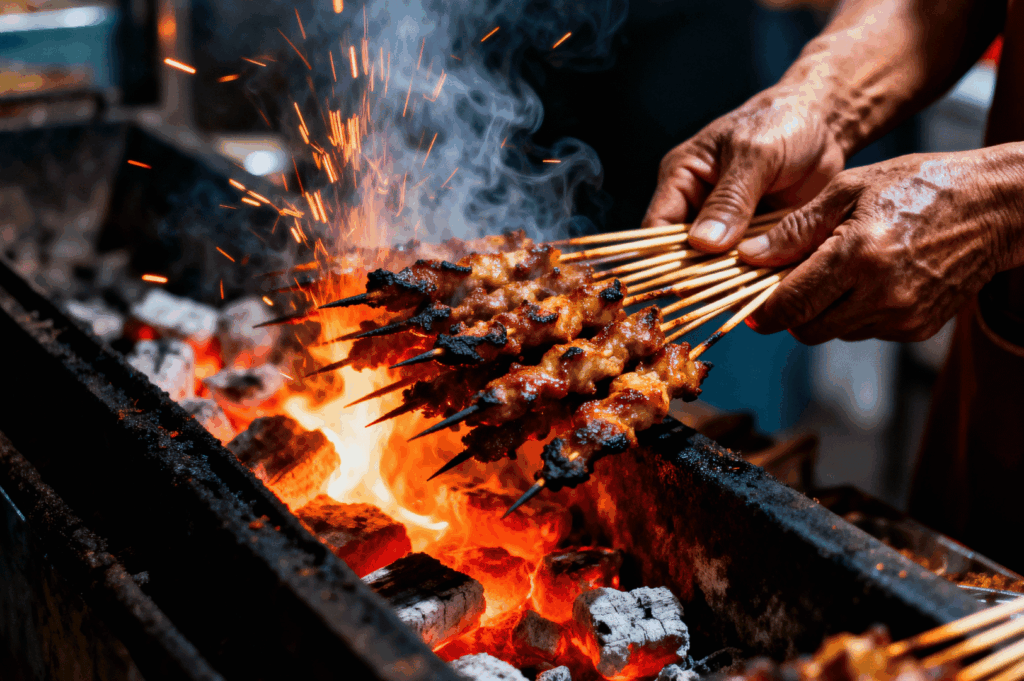
My first attempts were predictably unsuccessful. Appearing with camera in hand immediately created barriers – vendors were busy, suspicious of my intentions, or simply uncomfortable with the intrusion. I quickly learned that in Singapore’s traditional food culture, relationships precede business.
I began by becoming a regular customer, ordering satay without my camera for weeks at different stalls. I’d make small talk, compliment the food, and return repeatedly until my face became familiar. This investment of time proved crucial, especially with older hawkers who valued loyalty and personal connection.
Cultural considerations became paramount when photographing Singapore’s older generation of food vendors. Many valued modesty and were uncomfortable with direct praise or attention. I learned to be indirect in my approach, focusing initial conversations on their food rather than them personally.
Technical Challenges in Satay Photography
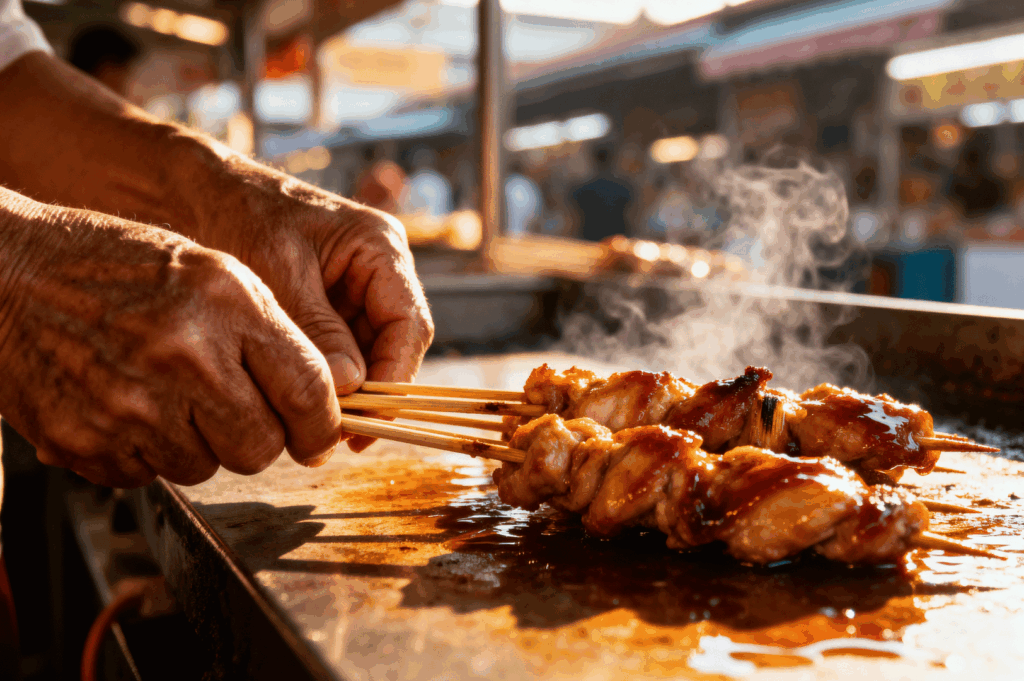
Photographing satay preparation means working in environments dominated by smoke and extreme contrast. The dancing flames create beautiful but technically challenging lighting conditions. I eventually settled on slightly underexposing my shots to preserve highlight details in the flames, knowing I could recover shadow detail in post-processing.
For flame photography, I found that fast shutter speeds (1/500 and above) froze the fire too statically, while too slow created chaos. A sweet spot around 1/160-1/250 second captured the essence of the flames while maintaining their dynamic quality. A slightly open aperture (f/4-f/5.6) provided enough depth of field while allowing adequate light.
Protecting equipment became a constant concern. Smoke particles and grease could damage lenses and sensors, so I adopted a minimalist approach – one weather-sealed camera body and a versatile 24-70mm lens. Lens filters became sacrificial protection layers, and thorough cleaning became a nightly ritual.
Timing proved crucial. The perfect moment often came when skewers were lifted and turned, creating a dramatic flare of flame as marinade dripped onto hot coals. These moments lasted split seconds, requiring anticipation and quick reflexes.
Satay Masters of Lau Pa Sat
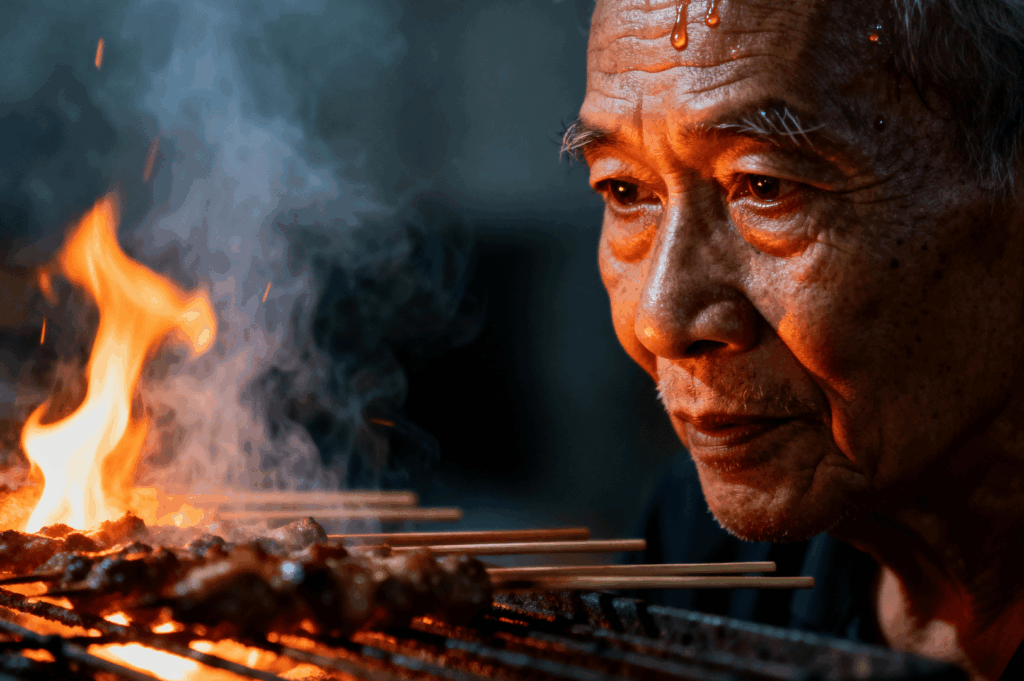
The heart of my satay photography journey took place at Lau Pa Sat’s famous Satay Street (Boon Tat Street), which transforms each evening when it closes to traffic and dozens of satay stalls set up their charcoal grills. One of my favorite vendors to photograph, Best Satay 7 & 8, offers a compelling visual narrative with their distinctive preparation style. Their satay masters work with remarkable precision, their experienced hands moving with rhythmic efficiency as they tend to rows of skewers over glowing coals. The way the marinade glistens in the evening light creates perfect moments for dramatic close-up photography.
Just a few stalls away, Alhambra King Satay at Stalls 3 & 4 presents a different photographic opportunity. With a stellar 4.1 rating from over 200 reviews, this vendor draws steady crowds that create dynamic compositional elements. Their unique grilling technique produces beautiful smoke patterns that create atmospheric images when backlit. Their signature satay, marinated in a closely guarded recipe, develops a rich caramelization that contrasts beautifully with the orange flames of their charcoal grills.
For anyone seeking to taste the work of these culinary artists firsthand, the comprehensive satay guide at StreetFoodPhotographer offers invaluable recommendations for the best satay stalls across Singapore.
Behind the Lens: Capturing Satay’s Hidden Moments
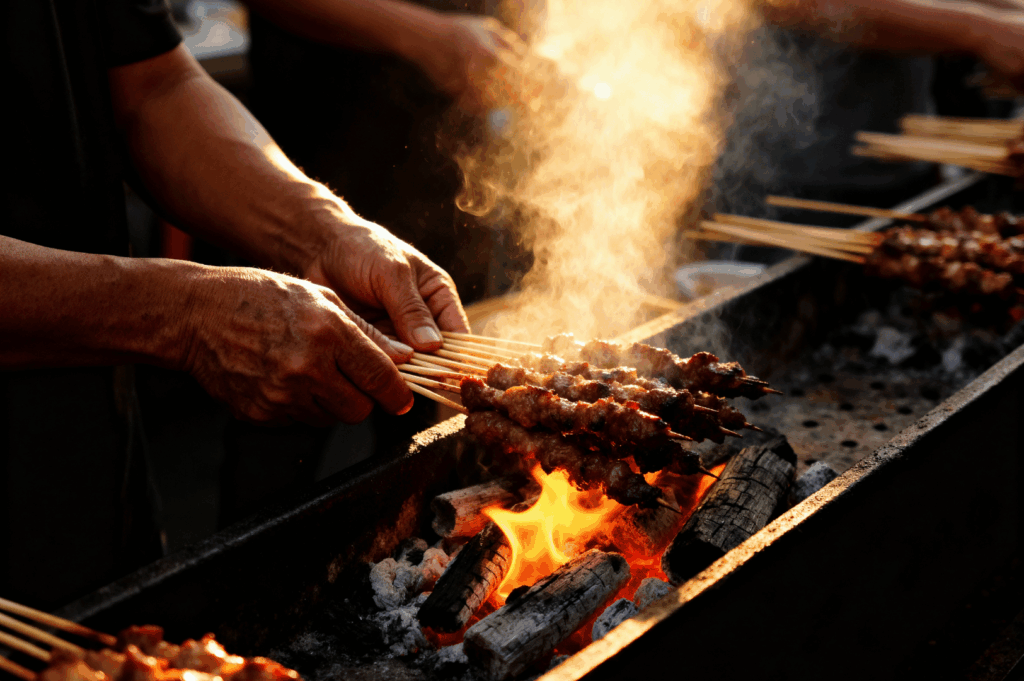
The most captivating photographic opportunities often emerge between customer orders. Early mornings reveal satay vendors preparing skewers, their hands working with practiced rhythm as they thread meat onto bamboo. The low, golden light of dawn creates dramatic shadows that emphasize the texture of raw ingredients and the precision of movements.
From a photographer’s perspective, these preparation scenes offer rich visual storytelling. I found that shooting with a shallow depth of field (f/2.8) isolated individual elements against the busy hawker center background, drawing the viewer’s eye to subtle details like how marinade clings to meat or how vendors organize workstations with methodical efficiency.
The most challenging yet rewarding images came from capturing the intense heat and drama of the grilling process. The contrast between dark charcoal and bright orange flames creates striking high-contrast scenes. I discovered that positioning at a slight angle to the grill rather than directly in front produced the most dynamic compositions, capturing both the flames and the vendor’s expressions as they focused on their craft.
Cultural Insights Gained
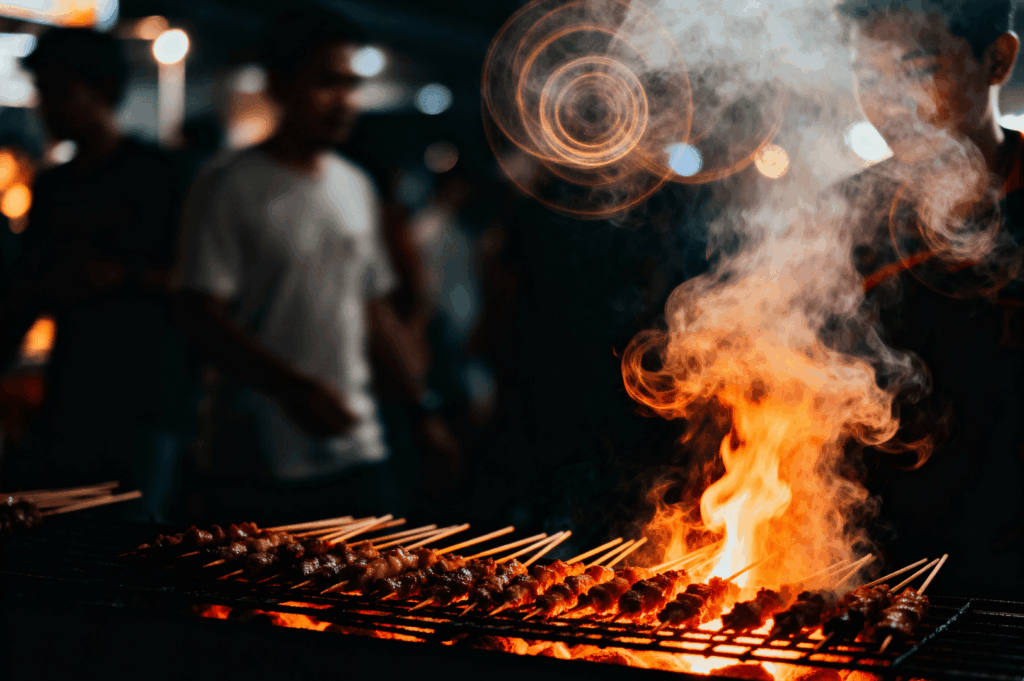
Through my lens, I gained deeper appreciation for satay’s cultural significance beyond mere street food. For many of these masters, satay represented family legacy and cultural identity. The carefully guarded recipes and techniques were living artifacts of Singapore’s multicultural heritage.
To truly understand the place these satay masters hold in Singapore’s culinary landscape, the in-depth exploration of flame-grilled traditions provides essential historical and cultural context that explains why these artisans command such respect.
Photography became the bridge that connected my outsider perspective to these insular culinary communities. The simple act of showing vendors their portraits often led to deeper conversations about their hopes and fears – particularly concerns about the future of their craft as younger generations pursue different careers.
Lessons for Photographers
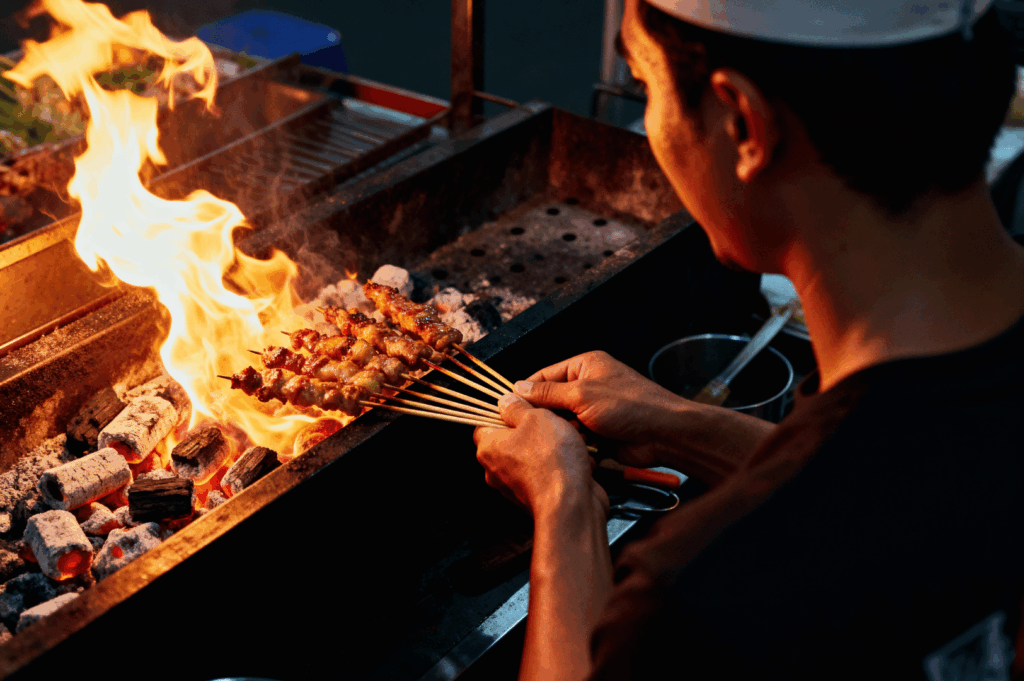
Documentary food photography in culturally rich environments demands more than technical skill – it requires cultural intelligence and genuine human connection. The most valuable lesson was learning to slow down, to observe before shooting, and to prioritize relationships over results.
This experience fundamentally changed my photographic approach. I learned that authenticity emerges not from staged perfection but from patient observation and earned trust. The technical skills of managing difficult lighting conditions proved less important than developing the cultural sensitivity to recognize meaningful moments.
